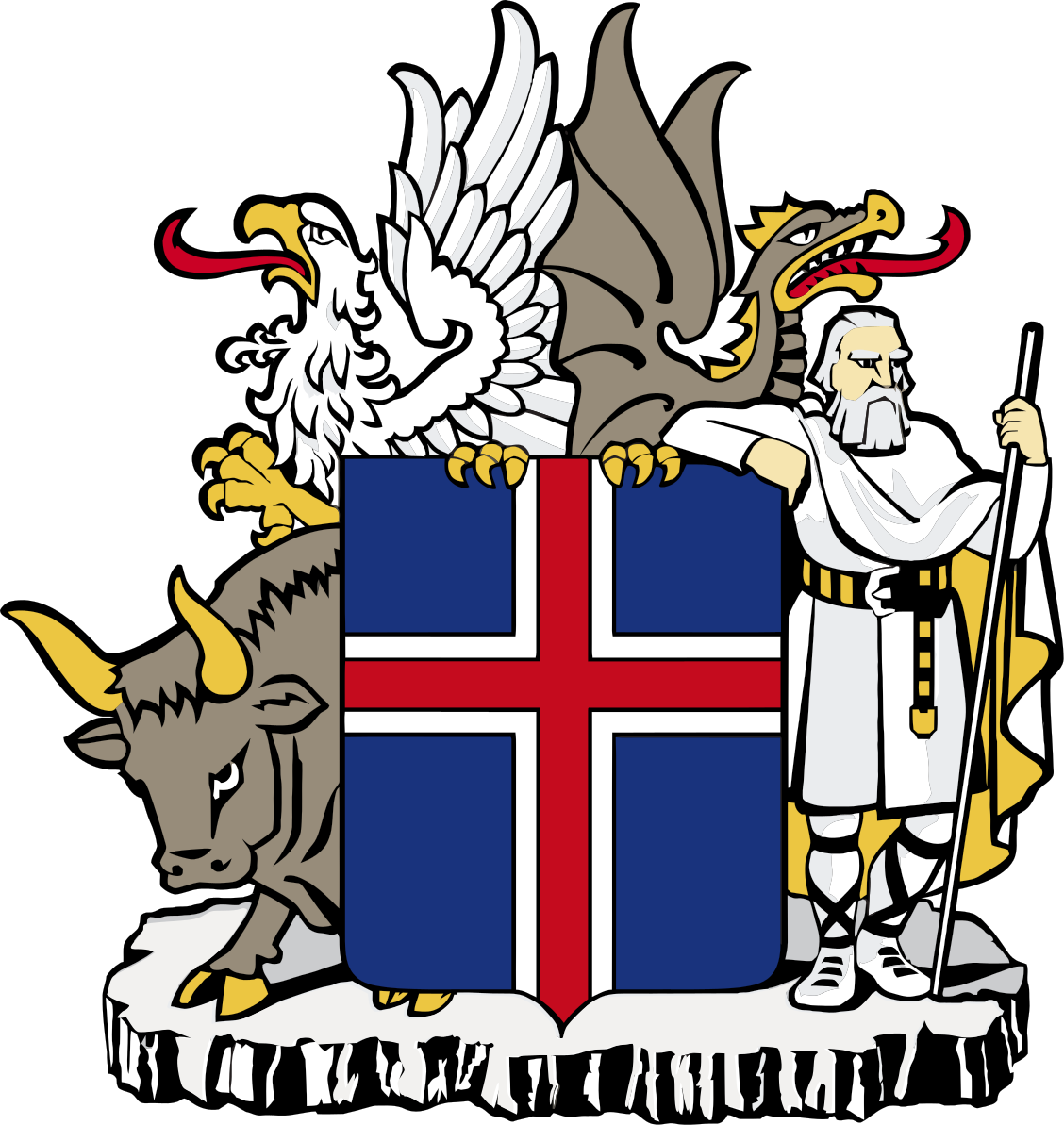Coat of arms of Iceland

The coat of arms of Iceland did not become a product of the new era, although it appeared in 1944 simultaneously with the emergence of the Icelandic Republic. On the contrary, the main Icelandic emblem continued the tradition of the ancient ideas of the Icelanders about their homeland and culture. Back in 1919, the royal coat of arms in the form of a gyrfalcon on a blue field was replaced by a new one depicting a shield and spirit-holders. Since Iceland remained a kingdom at that time, the top of the shield was crowned with a royal crown..
Updated symbol
The modern Icelandic coat of arms is reminiscent of the royal coat of arms of 1919 in many ways. In 1944, it was decided to leave the royal coat of arms of the Icelandic Republic, but with some changes. First of all, the crown that crowned the top of the shield was removed; the style of displaying perfume-holders was also changed; in addition, the developers of the symbol changed the base of the emblem.
Nowadays, the main element of the Icelandic coat of arms is the azure-colored shield. It depicts a silver Latin cross with another red cross inside. The main feature of this coat of arms is the perfume-holders. There are four of them and each of them is associated with a specific part of the island of Iceland..
- The bull is the patron saint of the southwestern lands;
- Vulture is the patron saint of the northwestern territories;
- Dragon is the owner of the northeastern lands;
- Giant - the prince of the southeastern possessions.
Each of the guardian spirits looks towards their lands. The entire structure is supported by a columnar basalt stone base.
Defenders of the Land
The Icelandic coat of arms, personifying the spirit-holders in the form of fairy-tale characters, takes us to the era of the Vikings and the sagas. Most likely, it captures the history of the Heimskringlish saga, which tells about the perception of the world by an Icelander who lived in the XII century. At this time, Iceland did not yet have an established statehood, but the era of military democracy continued. The island of Iceland has always been interesting to the invaders, and the Danish king Harald Bluetooth also wished to conquer it..
Wanting to carry out his plan, Harald sent his sorcerer to Iceland, who had to find out how the easiest way to capture the island. When he tried to land on the eastern shores, he was forced to flee because of the terrible dragon. On the northern shores, he was forced to flee from the giant eagle, and in the west, the sorcerer could do nothing against the giant bull. The southern lands were guarded by a man of gigantic stature, therefore the sorcerer failed here too. Since then, these characters have been considered the guardian spirits of Icelandic lands..


